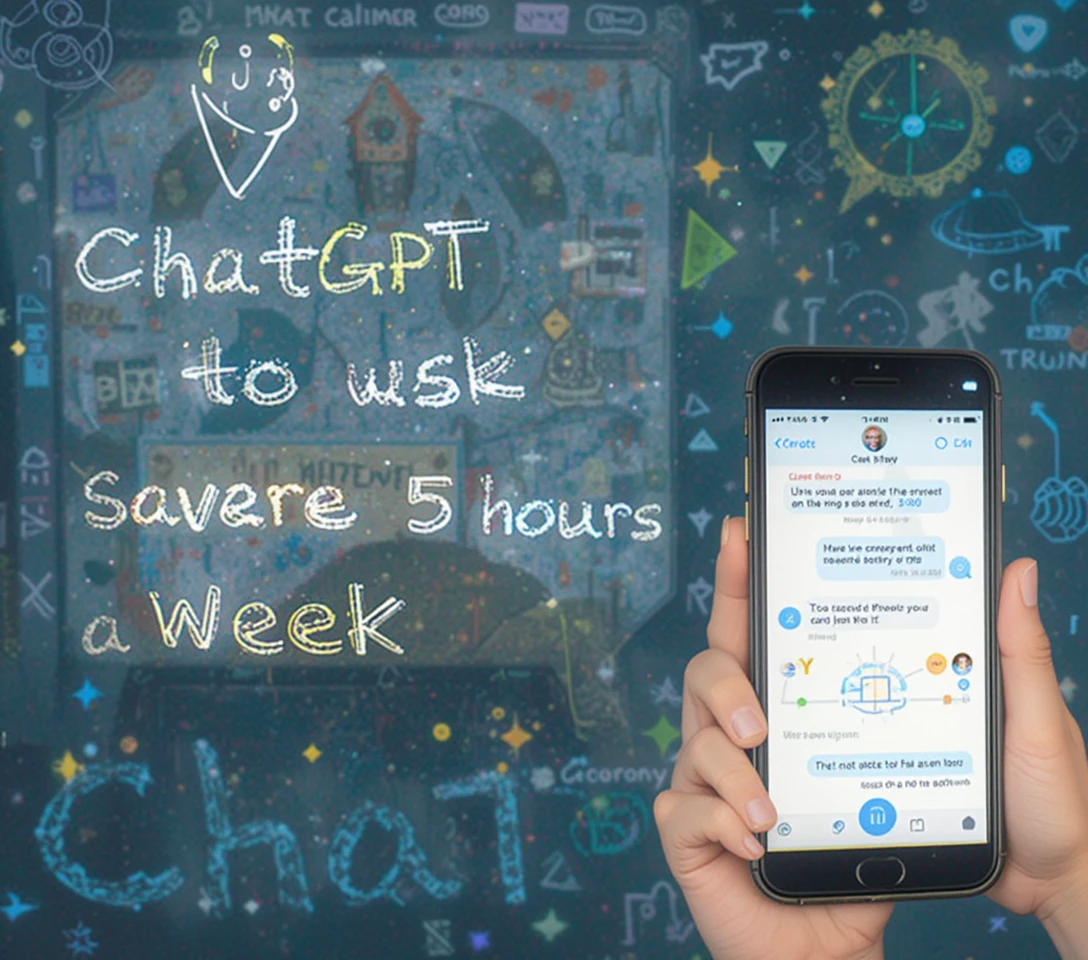Introduction
In today’s fast-paced world, time is the most valuable resource. Whether you’re a busy professional, entrepreneur, or student, finding ways to automate repetitive tasks and boost efficiency can be a game-changer.
One of the most powerful tools for productivity is ChatGPT—an AI-powered assistant that can handle everything from drafting emails to generating reports. By leveraging ChatGPT effectively, you can save at least 5 hours per week (or even more!).
In this 3,000-word guide, we’ll explore:
✅ Real-life ways to use ChatGPT for maximum time savings
✅ Step-by-step automation strategies
✅ Advanced prompts for better results
✅ Common mistakes to avoid
Let’s dive in!
1. Automating Email Responses (Save 1-2 Hours/Week)
Why It Works
Replying to emails is one of the biggest time-wasters. ChatGPT can:
✔ Draft polished, professional responses in seconds
✔ Generate follow-up emails automatically
✔ Summarize long email threads
How to Do It
Step 1: Use ChatGPT for Quick Replies
Instead of typing from scratch, prompt ChatGPT:
“Write a professional email response to a client who asked for a project update. Keep it concise and friendly.”
Step 2: Auto-Generate Follow-Ups
For recurring questions, create templates like:
“Draft a follow-up email for a meeting request, polite but firm.”
Step 3: Summarize Long Emails
Paste a lengthy email and ask:
“Summarize this email in 3 bullet points.”
Estimated Time Saved: 1-2 hours/week
2. Faster Research & Content Creation (Save 2 Hours/Week)
Why It Works
Whether you’re writing reports, blog posts, or presentations, research takes time. ChatGPT can:
✔ Summarize articles & PDFs
✔ Generate outlines & first drafts
✔ Help brainstorm ideas
How to Do It
Step 1: Summarize Long Articles
Paste a link (or text) and ask:
“Summarize the key points of this article in 200 words.”
Step 2: Generate Blog Post Outlines
Prompt:
“Create a detailed outline for a blog post titled ‘Top 10 AI Tools for Productivity.’”
Step 3: Draft Social Media Posts
“Write 5 LinkedIn post ideas about remote work productivity.”
Estimated Time Saved: 2+ hours/week
3. Automating Meeting Notes & Transcriptions (Save 1 Hour/Week)
Why It Works
Taking notes in meetings is tedious. ChatGPT (with tools like Otter.ai) can:
✔ Transcribe meetings in real-time
✔ Extract action items
✔ Summarize key discussions
How to Do It
Step 1: Record & Transcribe
Use tools like Otter.ai or Fireflies.ai to record meetings.
Step 2: Ask ChatGPT to Summarize
Paste the transcript and prompt:
“Summarize this meeting transcript, highlighting decisions and action items.”
Estimated Time Saved: 1 hour/week
4. Coding & Data Tasks (Save 1-3 Hours for Developers)
Why It Works
ChatGPT can:
✔ Debug code
✔ Write SQL queries
✔ Explain complex programming concepts
How to Do It
Step 1: Debug Faster
Paste your code and ask:
“Why is this Python script giving an error?”
Step 2: Generate SQL Queries
“Write a SQL query to find the top 10 customers by revenue.”
Estimated Time Saved: 1-3 hours/week
5. Personal Productivity Hacks (Save 30+ Mins/Day)
Why It Works
ChatGPT can help with:
✔ Meal planning
✔ Fitness routines
✔ Travel itineraries
How to Do It
Step 1: Generate Meal Plans
“Create a 7-day healthy meal plan for weight loss.”
Step 2: Plan Workouts
“Design a 20-minute home workout with no equipment.”
Estimated Time Saved: 30+ mins/day
Conclusion: How to Save 5+ Hours Weekly
By integrating ChatGPT into your workflow, you can:
✔ Cut email time by 1-2 hours
✔ Save 2+ hours on research & writing
✔ Automate meeting notes (1 hour saved)
✔ Speed up coding & data tasks
✔ Optimize personal tasks
Total Time Saved: 5+ hours/week
Next Steps
- Pick 2-3 tasks to automate first (e.g., emails & research).
- Experiment with prompts to refine results.
- Combine with other AI tools (Zapier, Notion AI) for even more efficiency.
Question for You: Which task will you automate first? Let me know in the comments!
